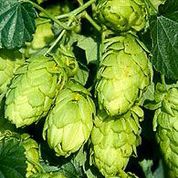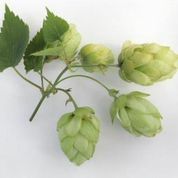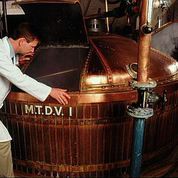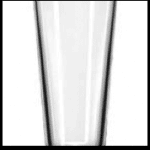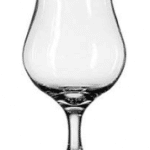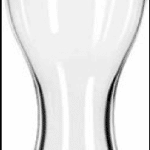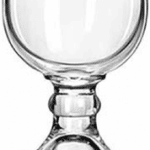Beer
- History
- What's in the Bottle?
- Types
- Beer Myths
- Beer Cocktails
- GUEST COLUMN

History
Along with wine, beer is probably one of the oldest alcoholic beverages known to man and the most popular one at that. All over the world, with the possible exception of France, Italy and Portugal, people guzzle beer in copious quantities which makes beer the third most selling beverage overall after water and tea. The word beer is derived from an Anglo-Saxon word called ‘Baere’, which means barley, which was and is still a very important ingredient in the production of the world’s most popular alcoholic beverage.
Back in 3000 BC when beer started to get popular in Europe it was mainly brewed and consumed at a domestic level until 700AD when it was produced and sold by the monasteries in Europe. Today it is a multi billion dollar industry with over 40 different styles of beer and spread across 6 continents.
What’s in the Bottle?
What’s in the bottle…
In 1516, the Duke of Bavaria passed a Purity Law (Reinheitsgebot ) according to which the only ingredients that could be included in beer are water, malted barley and hops. However this law was later modified and beer production could now include yeast, cane sugar, wheat and unmalted barley.
The four main ingredients in beer production are:
Water, Grains, Hops and Yeast.
WATER: Water forms about 90% of the beer, which makes it very important to have the right kind of water for making beer. In the early days breweries would try to locate themselves close to a good and clean source of water which would support the style of beer they are looking to make. But with today’s state of the art technology brewers don’t have to worry about the water suiting their needs as many of the modern breweries today have water treatment plants.
GRAINS: In the beginning it was just barley that could be used in beer production, which still continues to be the most popular grain of choice for beer production. Today other grains such as wheat and rye are also used in making beer. The grain is the source of sugar which gets converted to alcohol resulting in beer. The colour, texture and flavour of a beer depends a lot on the type of grain which is used in production. This grain is made into malt and sugar is extracted from it to convert it to alcohol.
HOPS: The introduction of hops into beer started as means of preserving the beer. They prevent the brew from going sour and also impart characteristic bitter flavour and an aroma to the beer. Hops plant is scientifically called Humulus lupulus. Lupulus means wolf. The female flowers of the humulus lupulus have an essential oil called lupulin, which gives the hop the bitter taste.
Besides the various styles of hops the brewers might like to use a variety of other substances like honey, fruits, chilies, herbs and spices to give the beer its distinctive flavor.
YEAST: Yeast is the catalyst which facilitates the reaction which converts sugar to alcohol and CO2. It was Louis Pasteur who discovered the importance of yeast in beer in 1871. Till then it was not really known.
The process is called fermentation and it is the basic step of all spirit and wine production.
Two main varieties of yeast used for beer production are:
- Top fermenting: sacchromyces cerevisiae
- Bottom fermenting: Sacchromyces carlsbergenesis
… And how it gets there
The following process of beer production is the same for all types of beer. Some breweries however will perform one or more of the following tasks in a different way. For example: Some breweries would not filter the yeast out of the beer before bottling it. On the other hand there are breweries which add live yeast to the bottle just before bottling the beer which leads to a secondary fermentation in the bottle.
Malt
Barley / grain is used to make brewers’ malt. At the malting companies, barley / grain is soaked, germinated (sprouted), then dried and/or kilned/roasted to arrest further growth. Its then screened and crushed.
Mashing
Malt is added to heated, purified water .Here the starch is converted to sugar. Mashing takes place in a large, round tank called a “mash mixer” or “mash tun” and requires careful temperature control.
Lautering
The mash is transferred to a straining (or lautering) vessel which is usually cylindrical with a slotted false bottom. The liquid extracted is called the “Wort”.
Boiling and Hopping
The Wort is then boiled in a huge cauldron called the Brew Kettle. Subsequently, Hops are added to contribute to the flavour, aroma and bitterness of the brew.
Hop Separation and Cooling
After the beer has taken on the flavor of the hops, the hops are removed. The Wort then proceeds to the “hot wort tank”. It is then cooled to about 10-15 degree Celsius.
Fermentation
The wort is then moved to the fermenting vessels and yeast, the guarded central mystery of ancient brewer’s art, is added. The yeast breaks down the sugars in the wort to carbon dioxide and alcohol.
The brewer uses two species of this Yeast. One yeast type, which rises to the top of the liquid at the completion of the fermentation process, is used in brewing ale and stout. The other, which drops to the bottom of the brewing vessel, is used in brewing lager.
During fermentation, which lasts about seven to 10 days, the yeast may multiply six-fold and in the open-tank fermenters used for brewing ale, a creamy, frothy head may be seen on top of the brew. When the fermentation is complete, the yeast is removed. Now, for the first time, the liquid is called beer.
Cellaring
For one to three weeks, the beer is stored cold, this process is also called ‘Lagering’. After this the beer is filtered once or twice before it is ready for bottling or “racking” into kegs. These kegs will later be sold as draught beer. Read more about draught beer below. It may also be pasteurised at this stage to kill any living bacteria and for improving the shelf life of the beer and then packed as bottles.
Packaging
The beer is then packaged. Some of the machines can fill up to 1200 bottles per minute! The bottles are inspected, labelled and usually stacked in a storage hall where it referments. The carbonic gas produced by the fermentation saturates the beer and thus contributes to forming the creamy head.
TAP OR BOTTLE??
Beer served straight from the keg by means of a spigot or a valve unlike the bottled or canned varieties is called a draught/draft beer. Draught beer hasn’t been subjected to the Pasteurization process as a result of which it has a shorter shelf life but more flavours compared to their bottled counterparts.
The next time you order a pint of draught beer pay attention to the carbonation in the beer and it’s head.
Draught beer should always be stored at a temperature of 4 degrees Celsius.
Types of Beer
Although there are 50 different types / styles of beer they are often categorised under two main types namely Lagers and Ales.
LAGER: It is a style of beer which is popular for its light and crisp taste. The fermentation process used for making Lager styles of beer is called ‘Bottom Fermentation’ caused by a yeast called Saccharomyces carlsbergensis (now you know how the popular beer Carlsberg got it’s name) which settles at the bottom of the fermentation tank during the process. The fermentation of this style of beer is done at a temperature between 7 to 12 degrees Celsius.
Some common styles of lager beer would be Pilsner, Pale lager, Vienna Lager or Dortmunder. These are all different styles of Lager beer.
Serving temp.: Pilsner and light lagers at 4-6 C. Dark Lagers at 7- 9 C
Popular brands: Budwieser – (Pale Lager, USA), Heineken (lager), Amstel (light lager) (Netherlands), Estrella (Pilsner lager,Spain), Corona (pale lager,Mexico), Stella Artois (Pale lager,Belgium), Miller (pale lager,USA), Tsingtao (Pilsner, China)
Brands in India: Kingfisher (Lager), Tuborg (Lager), Budwieser, Stella Artois, Corona, Heineken, Carlsberg Elephant (Strong Lager)
Food Pairing: Goes well with hearty, spicy food like barbecue, chicken wings, Sausages, Hamburgers, Chili etc.
Glass: Pilsner
ALE: Generally popular for their fruity style and relatively more sweet and fuller bodied when compared to a lager, Ales are also referred to as ‘Top Fermented’ beers. The fermentation here is caused by a yeast called Saccharomyces cerevisiae which floats at the top of the of the vessel during fermentation process. Fermentation for this style of beer takes place at a higher temperature of 15 – 20 degrees Celsius than lagers. Some common styles of Ale beers are IPA, Porter, Stout, Lambic and Wheat beer (as per the German purity law).
Serving Temp.: 8 – 10C
Popular Brands: Leffe, Marstons Pedigree, Fullers London Pride, Superbock
Brands in India: Leffe, Marstons, Fullers London Pride
WHEAT: In the early days this beer was restricted to Royal families as wheat was also used for bread.
These are top fermented beers that use wheat along with barley in the production of this beer. More often than not the appearance of this beer is cloudy and hazy when compared to a lager. This is mainly because it does not go through a proper filteration process. The two major styles of wheat beer are called Weissbier and Witbier both meaning White Beer coming from Germany and Belgium respectively.
There is another style of wheat beer very popular in Germany called the Hefeweizen. The ‘Hefe’ here refers to ‘with yeast’ which explains the cloudy look of this unfiltered beer and ‘Weizen’ meaning ‘wheat’. This popular German beer often gives flavours of banana and cloves which is acquired from the yeast. If you are in the US chances are that you will be served this style of beer with a lemon wedge to cut the yeasty edge.
Serving Temp.: 7-8C
Popular Brands: Hoegaarden, Erdinger, Paulner, Weinstephaner, Schneider Weisse
Brands in India: Hoegaarden, Erdinger
Food Pairing: Great with lighter styles of food like seafood, salads, sushi, etc.
Glass: Wheat Beer Glass
IPA (India Pale Ale): Pale ale refers to a style of beer that has been produced using pale malt. This colour is acquired by drying/roasting the malt a little longer until it gets the desired colour. This style of beer was first brewed in England in 1840 and has a strong hoppy character with generally but not always a higher percentage of alcohol. This style of beer became very popular within the East India Company as it did not go bad during this long voyage from England to India via the Atlantic and the Indian ocean. This was primarily due to the extra hops that the beer was brewed with which acts as a preservative in a beer. Over the years a lot of countries removed India from the beer and sold it as just Pale Ale.
Serving Temp.: 9C
Popular Brands: Dogfish, Sierra Nevada, Green Flash West Coast, Bell’s
Brands in India: None at the moment unfortunately
Food Pairing: Strong flavoured and spicy foods. Perfect combination with Indian Curries or strong flavoured tandoori dishes.
Glass: Tulip goblet
PORTER: Porter is a dark style of beer which is well hopped and is made using dark coloured malt as a source for sugar. This dark colour is obtained by drying/roasting the germinated malt for considerably longer period of time till it acquires the desired colour. The term Porter is derived from its popularity with the street and river porters / coolies (as we know them in India). This style of beer owes its origin to the city of London in the 1700’s. Porter beers have a full and rich mouth feel with a strong hoppy character and a distinctive bitterness with a long finish.
Serving Temp.: 10 – 12C
Popular Brands: Fullers London Porter, Samuel Smith’s Taddy Porter, Chocolate Porter.
Brands in India:
Food Pairing: Roasted or Smoked dishes, Gruyere cheese.
Glass: Pint
STOUT: Stout as the name suggests is a strong style of beer. With huge popularity of Porter beer the brewers started making them in various strengths and the strong style of Porter was termed as Stout Beer. Stout beers are similar to porter beers but have a strong coffee, chocolate and caramalized flavours. There are different styles of stout beers some of which are Irish Stout (generally low in alcohol), Imperial Stout, Oyster stout, Chocolate stout, etc.
Serving Temp.: 10 – 12C
Popular Brands: Guiness, Murphy’s, Samuel Adams
Brands in India: Guiness, Murphy’s Irish Stout
Food Pairing: Rich food full of flavours like roast duck, pork, lamb, steak or a meat pie. Also desserts like Tiramisu and Mocha go very well.
Stouts can be served in the same glassware like Porters above.
TRAPPIST: A Trappist beer is a beer brewed by or under the control of trappist monks within Abbey compounds. It all started with the La Trappe monastery in France which had its own brewery in 1685. The idea for this was that the monasteries should be self supporting. To be able to be rated as a trappist monastery, beer production should never be their primary job and the profits from the sale of this beer should be used for social causes or put back in the brewery or used for running that monastery and if possible also support other monasteries. With adherence to such strict laws, today there are only 7 Trappist breweries in the world (6 in Belgium and 1 in Netherlands). With a luxury / exclusive positioning in the market these beers are also termed as ‘The Single Malts’ of the beer world.
Serving Temp.: 13- 15C
Popular Brands: Chimay, Orval, Rochefort, Westmalle, Westvleteren, Achel, and LaTrappe.
Brands in India: Chimay
Food Pairing: Goes well with food with a strong flavours like roast lamb, Salmon, Thick meat stews.
Glass: Chalice glass
FRUIT BEER: It is a beer that has been brewed with either natural fruits or flavourings that give the flavour of a particular fruit. The malt and hoppy flavour is generally masked by the flavour of the fruit. The ratio of fruit/fruit juice to malt/malt juice is different for each brewery. Many popular beer companies position their fruit beer as a summer drink to be had on ice or also as a perfect mix for your cocktails.
Serving Temp.: Chilled over ice.
Popular Brands: Liefman’s, Fruli
LAMBIC: These are beers which were traditionally brewed in Belgium close to the town of Brussels. Unlike huge commercial breweries these beers are fermented naturally by the action of wild / natural yeast present in the atmosphere. These beers are further rested with the fruit for flavours. The common fruits used in this style are cherries, raspberries, peach and black currant.
Serving Temp.: Chilled over ice.
Popular Brands: Cantillon
Beer Myths
Beer is high in calories, gives a beer belly and is unhealthy
A: At an average of 4.6% beer has fewer calories than wine, milk of fruit juice. Like any alcoholic beverage beer needs to be consumed in moderation. It’s not the beer it is the yummy fried stuff that you eat along with it which is responsible for a beer belly. On the contrary a pint of beer has 10-20gm carbohydrates and 2.5gm fibre which makes it at par with a slice of whole wheat bread.
Beer has preservatives like glycerine
A: As mentioned in the beginning beer is made of only four ingredients which are malt, water, yeast and hops. The hops in the beer give the beer a lot of it’s flavour characteristics and also acts as a preservative which is why beer has a shelf life.
Beer and food don’t go together
A: Tell that to the Belgians, who have restaurants devoted to cuisine a la biere. If that sounds too elaborate, treat yourself to a porter with oysters; a Pilsner Urquell with fish; a Westmalle Trappist Triple or a Duvel with asparagus: a Samuel Smith’s Nutbrown Ale with a crunchy salad; a reddish ale with red meat; a Trappist Chimay Grande Reserve with cheese; an Imperial Stout with a chocolate dessert.
Women drink wine and don’t drink beer
A: Fortunately it’s not true. Back in the days women were brewing women at home much like in India how pickles are made at home by women. On the other hand men were going out to the vineyards and making wine. Also quite a lot of breweries are owned and operated by women. So we know that beer is all about enjoying the taste and flavours, much like wine.
Beer is bitter
A: Yes and no. All beers have some bitterness. That is one reason for the hops: their herbal character and dryness balances the sweetness of the barley malt. Many beer-lovers enjoy the appetising bitterness of very hoppy brews: the bitterness arouses the gastric juices. Some would argue for balance, as exemplified by English classics such as Fuller’s London Pride or Marston’s Pedigree. Others like sweeter malt-accented brews such as the classic Scottish ales from Caledonian, Belhaven or Maclay’s. Both the malt and the hops should be detectable: what’s the point of beer that tastes of nothing?
Ale beers are always dark
A: If you think the same then try the Duvel or a Kolschbier. A beer is dark owing to the drying / roasting of the barley which means an ale can be pale and a lager can be dark.
Dark beers are stronger and have more alcohol
A: All we have to say is take a Guinness and a Budweiser and see for yourself. Where the Bud is at 4.6%, Guinness is all of 4.2% or a Murphy’s at 4%
Corona is served with a lime wedge to compensate for the weak taste
A: In the warm tropical climate, insects were attracted to the malty sweetness of the beer and Mexican bartenders used the lime wedge to prevent them from infecting the beer. The idea caught on and became a signature for the brand. If you go to Mexico today they will serve you a Corona without a lime / lemon, as all the insects have disappeared!
Dark beers are fattening
A: No more than pale beer. Colour does not contribute calories. A modest glass or two of beer with dinner is less fattening than a shared bottle of wine. Everyday beers have fewer than half the calories of most wines, because the latter are two or three times as strong. The extra calories lurk in the alcohol.

